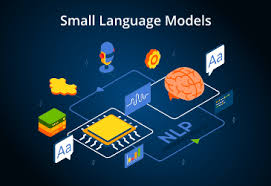The Rise of Small Language Models
Science & Technology SciencePosted by NewAdmin on 2025-03-20 08:57:23 |
Share: Facebook | Twitter | Whatsapp | Linkedin Visits: 65

Small Language Models (SLMs) are becoming increasingly popular as an alternative to large-scale AI models. These models, typically with fewer than 10 billion parameters, offer several advantages, including faster training times, lower energy consumption, and improved security. Unlike Large Language Models (LLMs) that require vast computational resources, SLMs can be deployed efficiently in edge computing environments, mobile applications, and enterprise-specific domains.
One of the main reasons for their growing adoption is their ability to be trained on focused datasets, which makes them highly specialized for specific industries. This allows companies to develop AI-powered tools without the high costs and regulatory challenges associated with LLMs. Major tech companies like Microsoft, Google, and Meta have already introduced their own SLMs, such as Microsoft’s Phi-3 models and Google's Gemma 2B and 7B, which cater to various text-based applications like content creation and customer support.
However, SLMs are not a direct replacement for LLMs. They are often used in combination with larger models to balance efficiency and capability. While SLMs work well for domain-specific tasks, they may struggle with generalization across diverse topics, which is where LLMs still have an advantage.
With enterprises seeking cost-effective AI solutions, SLMs are expected to become more mainstream in 2025, particularly in business applications that require lower computational resources and enhanced data security.
Search
Categories
Recent News
- Hyderabad Gears Up for Presidential Visit, Traffic to Be Affected
- Hyderabad's Traffic Transformation: A Multi-Agency Effort
- Digital India's Dark Side: Elderly and Vulnerable Targeted
- Hyderabad Gears Up for Christmas Feast: Traffic Diversions in Store
- Hyderabad's Homicide Surge: A City on Edge
- Hyderabad's Biryani Scam: When Food Delivery Meets Fraud
- RBI's UDGAM Portal: Hyderabad's Cyber Fraud Warning
- Hyderabad Gears Up for Presidential Visit: Traffic Advisory Issued
Popular News
- Navigating IPO Market Dynamics Amid Volatility and Regulatory Changes
- Innovative Green Practices and Environmental Initiative
- Massive Worldwide Microsoft Outage Disrupts Multiple Sectors
- తెలుగుదేశం పార్టీ - పేదరికాన్ని నిర్మూలించడంలో వాగ్దానం
- Universities Embrace Remote Learning Technologies Amidst Ongoing Pandemic